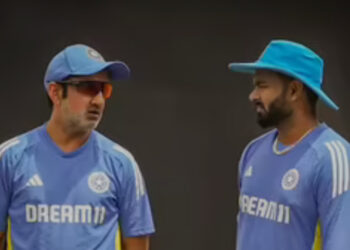In the 1980s, legendary filmmaker Satyajit Ray often described the Indian audience as backward — not out of arrogance, but out of frustration at the lack of critical engagement and understanding. Forty years on, little seems to have changed. If anything, it’s only grown worse.
Be it a political rally, a crowded railway station, a religious gathering, or a cricket stadium — the scenes are familiar: over-enthusiastic crowds blindly following religious figures, movie stars, or cricketers with unquestioning loyalty. What once looked like harmless fandom has now morphed into a cultural default — a way of life driven more by sentiment than sense. And the real tragedy? The population has exploded since Ray’s time, multiplying the volume and intensity of this blind following. In today’s India, mass influence has outpaced mass awareness.
The tragic stampede in Bangalore — occurring just as RCB celebrated their long-awaited maiden IPL title — has exposed a deep, disturbing truth about how we, as a nation, sometimes process public triumph. Over 10 lives lost, countless injured, and what should have been a proud, joyous moment instead devolved into chaos.
This isn’t about cricket. It’s about culture — or the alarming lack of crowd discipline and event responsibility in high-stakes, high-volume gatherings in India. The blind frenzy, the mob-like adulation, the absence of basic planning — this isn’t celebration. It’s hooliganism wearing a jersey.
And while fingers are being pointed at the BCCI, the truth is: this wasn’t their event. The IPL ended on Tuesday. The victory celebration was organized by the RCB franchise in coordination with the state government — not the Indian cricket board. In fact, the BCCI wasn’t even informed about the magnitude of the event, nor were they directly involved in the logistics.
It’s worth remembering that this is the same BCCI that safely conducted matches during COVID-19, during periods of political unrest like the India-Pakistan tension, and even managed to suspend and relocate an IPL match (DC vs PBKS) with over 25,000 people present — all handled with discipline and order.
We’ve had victory parades before — in the streets of Mumbai, in Wankhede Stadium — and they were celebrated responsibly, with proper infrastructure and crowd control. The question is: why was that experience and precedence ignored here?
Public emotion is powerful, but without structure, it turns dangerous. If this tragedy doesn’t force a cultural and administrative reckoning in how we organize mass sporting celebrations, then we’ll have learned nothing — not from Ray’s reflections, not from past disasters, and certainly not from the value of human life.
















